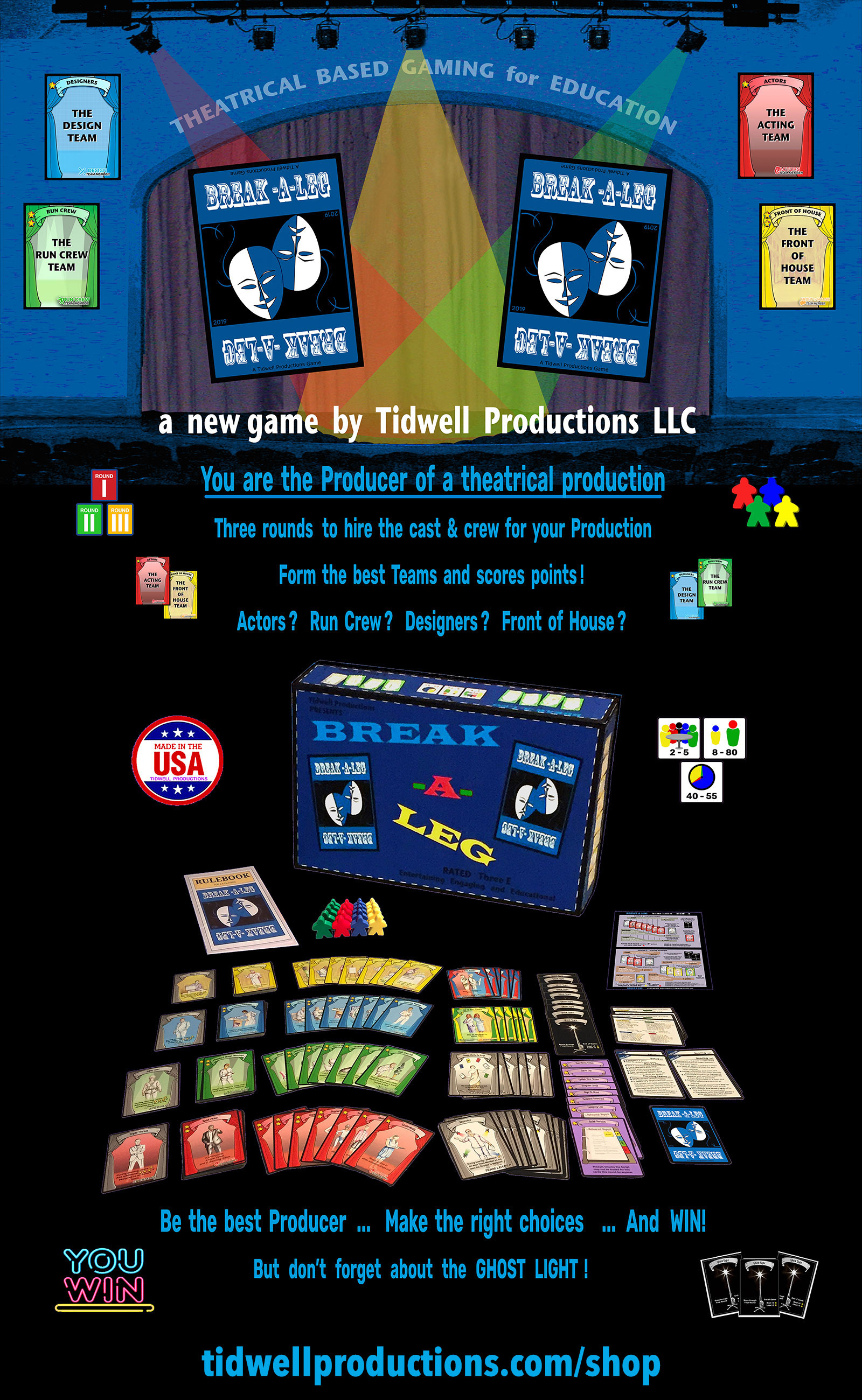Gaming in the classroom

Life in the classroom has always been a little challenging for me. It’s all about standing up in front of a group of students and eloquently delivering the days subject matter in an interesting way that gets a little nerve racking. But I always wanted to teach and theatre design and technology was my topic of choice. I was determined to find ways to make the material interesting for the students and to make it easier for me to present it. Over the years, I developed a few tactile projects that usually require paper, scissors, and glue in cooperative group work. And the response has always been delightful - even students in college enjoy working through a costume project with construction paper and scissors or a puppet project with sticks, fasteners, and paper.
Interesting articles surfaced in that time regarding whether or not using table top games in the educational setting is advantageous or beneficial. An article by Annalisa Crews in the journal Knowledge Quest, emphasizes that “board games promote collaboration, inquiry, and critical thinking ... Play is an important part of our mental and social development” and was interesting. The article elaborated about schools who had success in using board games in the classrooms. One school used games to review and reinforce basic math skills, another had a science class that used a game to discuss resources vs costs for various power plants, and one used a game that helped review locations of countries. Not only did students learn concepts and management skills but they really enjoyed the time they played the games. This made me wonder if creating educational games for theatre might be another possibility for the classroom.
When I started working on our card game project, Break-A-Leg, I was guessing it would be popular among the students. Even from the early awkward stage, it was very well received and frequently requested, and has been positive throughout the four years of play testing and revisions. I found students really enjoy learning by playing games in the classroom.
This positive response led me to read a little more about games in the classroom and I found another article in Life Sciences Education. It noted that educational games are an effective supplemental material for reinforcing learning compared to traditional methods. Students find games to be an outstanding opportunity for healthy competition and a good supplemental study guide. This reinforced my observations also.
I recently discovered the website PlayPlayLearn.com that discusses board games and education, enlightening the reader to the modern ideas that offering games in the classroom can provide learning in unusual methods. Games incorporate thematic elements that may not be originally evident. Early gaming skills include cooperation and competition and may often preclude great management skills in a large corporation later in life. This site also reviews several games for education and the age levels that they are appropriate.
These are just three examples from many articles that discuss the positive influence that games have on students in an educational setting. It seems that gaming can, and does provide another alternative teaching method instead of the standard lecture series.
Our development of Break-A-Leg at Tidwell Productions is on track with our expectation that games can be an effective learning tool in the academic environment. We hope that this game and our other ones in development balance that little bit of learning with an enjoyable experience for all.
Break a Leg. The Theatrical Card Drafting Game.
Break a Leg is the new fast-paced card drafting game from Tidwell Productions. Take on the role of a theatrical producer and hire the best cast, creative, and crew, and foil the plans of your opposing producers! Buy Now on the Tidwell Productions Shop!
